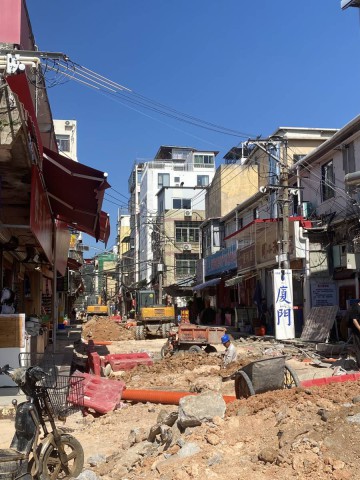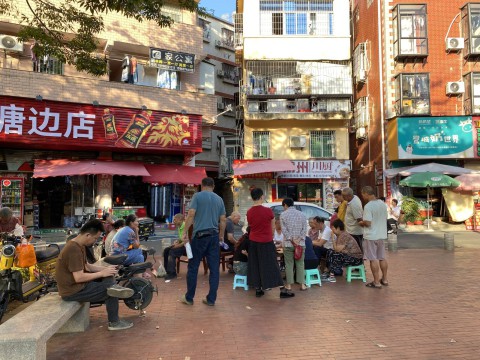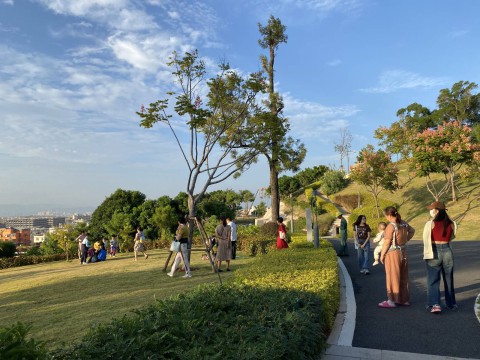URBAN VILLAGE REGENERATION: APPLYING AN ‘EPC+O’ MODEL
Authors: Helen Nuo XU and Gehry Guo CUI
Rethinking urban village regeneration: from a 'project' to a 'process'
Speed is often the most striking impression many have of China's incredibly rapid urban development over the past four decades. An example is the 200,000 m2 Wanda Shopping Plaza, which can be completed from architectural design to its official opening (with all tenants moved in) in less than 18 months. This is remarkable given the fragmented nature of the development process, with each stage handled by different entities, a process that typically takes two to four times longer in Western cities. Thanks to the high degree of standardization of the construction process, new modern cities have rose up like splitting bamboo in short timeframes.
Urban villages are one of the byproducts of this rapid development. When village farmlands were acquired by the government for new business districts, industrial parks, and digital centres, the farmers' residential plots were left untouched (due to the immense relocation cost), later becoming surrounded by modern skyscrapers. Limited space for new development and an urgent need to address the excessive crowding, insanitation, and disorder in these urban villages have brought attention to their redevelopment.
Reviewing the initial phases of urban village redevelopment, it is clear that most of these projects adopted the same philosophy as new developments – prioritizing standardized physical transformation and short-term gains (project payments, environmental upgrades, and media promotion). Additionally, undertaking renovations in densely populated areas demand significant financial backing, whether for large-scale infrastructure improvements or handling demolition and relocation. However, local governments are currently facing budget constraints. These challenges indicate a need for a shift away from the traditional 'speed-first' approach, which heavily relied on public welfare expenditure, toward an integrated, people-oriented, and financially sustainable approach.
While some of the latest attempts recognize the need for a market-driven financial strategy, many still treat it as a one-time fix rather than an ongoing and continuous process. This results in a preference for easily replicable operational models based on a predictable formula of 'historical elements + low-quality trendy businesses + physical beautification + social media promotion'. The outcome? Although such approaches bring quick returns, they often sacrifice genuine spatial vitality and end up marginalizing the very local communities they claim to serve.
A new EPC+O approach: does it work?
We discovered an inspiring example in Xiamen (historically known as Amoy), where a more economically and socially sustainable redevelopment mechanism is being implemented through the EPC+O model. This model synthesizes Engineering (E), Procurement (P), Construction (C), and a significant strategic emphasis on long-term Operation (O), with one entity responsible for all stages.
For the regeneration of Tangbian Urban Village in Xiamen, the village committee appointed Fuxinli Urban Spatial Operation Group (福信里城市空间运营有限公司), which took the innovative step of adopting the EPC+O model, taking comprehensive responsibility for the entire project lifecycle, from planning to operation for the next 10 years. With certain questions about its potential effectiveness, we carried out field surveys and interviews with Fuxinli's general manager, and confirmed two key advantages of this new model:
Firstly, the EPC+O model enables a holistic and integrated approach across the entire project lifecycle. In many past projects, where planning, design, business operation, and management were handled separately by different entities, the result was often a fragmented, short-term, profit-oriented endeavor. Such a disjointed approach frequently led to superficial stakeholder engagement and incurred significant costs during transitions between project phases handled by different entities. Under the EPC+O framework, Fuxinli assumes responsibility for the complete renovation lifecycle, encompassing spatial planning, business development, village asset management, community development, and property management. Acting as a central coordinator, much like a 'butler', it strives to ensure seamless coordination across various project phases, different spatial zones within the urban villages, and the crucial balance between community well-being and commercial viability.
Second, the long-term responsibility mechanism fosters consideration for economic and social sustainability over time. When a renovation project extends beyond the typical one-year phase, and spans a decade as in Tangbian's case, it naturally shifts the mindset away from short-sighted approach towards a well-planned, long-term investment strategy. This necessitates financial audits throughout the project lifecycle, meaning the business structure and operational model must be designed from the outset to sustain themselves and contribute positively to the community in the long run.
Tangbian Urban Village's case: how to do it?
Given Tangbian Urban Village's central location on Xiamen Island and its large population of local elderly and young migrant workers, the strategic planning wisely positioned its function as a 'residential community'. The regeneration plan incorporated primarily essential community and public services, including convenience stores, barbershops, pharmacies, and elderly daycare centres, recognizing that 'a thriving community base is fundamental to the operation of a modern urban village'.
The ultimate goal for Tangbian Urban Village is to establish a self-sustaining financial ecosystem generating its own economic vitality and providing lasting benefits for its residents, instead of relying on external investment. Fuxinli's baseline analysis, which covered land resources, building conditions, local business structure, and the surrounding environment, revealed Tangbian's unique advantages. Rich with century-old historical and cultural buildings and bordering Stone Mountain, the village naturally lends itself to creating a unique historical-cultural and natural scenic route in central Xiamen Island. By highlighting the distinctive historical buildings along the alleys, and developing new functional complexes at village entrances and main road intersections, Fuxinli achieved a robust integration of culture, tourism, and business, thereby attracting significant external private and social capital investments.
Potential pitfall to avoid
For sure, while the EPC+O model provides an innovative idea for urban village regeneration, its long-term viability requires more time to be proved. Those adopting this approach may want to proactively prevent potential pitfall.
A key concern lies in the inherent concentration of operational risks under unified management. When a single entity is solely responsible for a project spanning over a decade under EPC+O model, the potential for project interruption or complete failure becomes highly dependent on that entity's sustained financial health and operational competence. Therefore, supervision regarding the financial stability of the lead operating entity is paramount to prevent project interruption or failure. Importantly, the strategic selection of businesses and operational models should verily prioritize the creation of sustainable, long-term value for the local community and the project itself, rather than being driven by the allure of short-term economic gains.
Helen Nuo XU
She is a special research member of URBAN LAB 8 and Urban China. She holds an MPhil in Planning, Growth, and Regeneration from the University of Cambridge. She has gained diverse research and professional experience through internships at institutions such as UN-Habitat and the China Academy of Urban Planning and Design. Her work focuses on inclusive urban regeneration, environmental and social sustainable development, and she explores these themes via spatial analysis, research articles and podcasts.
E-mail:
Gehry Guo CUI
He is the executive editor of Urban China magazine, and directs the Urban Planning Department at Shanghai HuaDu Architecture & Urban Co., Ltd. (HDD). He is also the founder of URBAN LAB 8 (www.urbanlab8.com), an open research network formed by more than 70 outstanding young scholars in architecture and urban planning worldwide.
When you subscribe to the blog, we will send you an e-mail when there are new updates on the site so you wouldn't miss them.





Comments